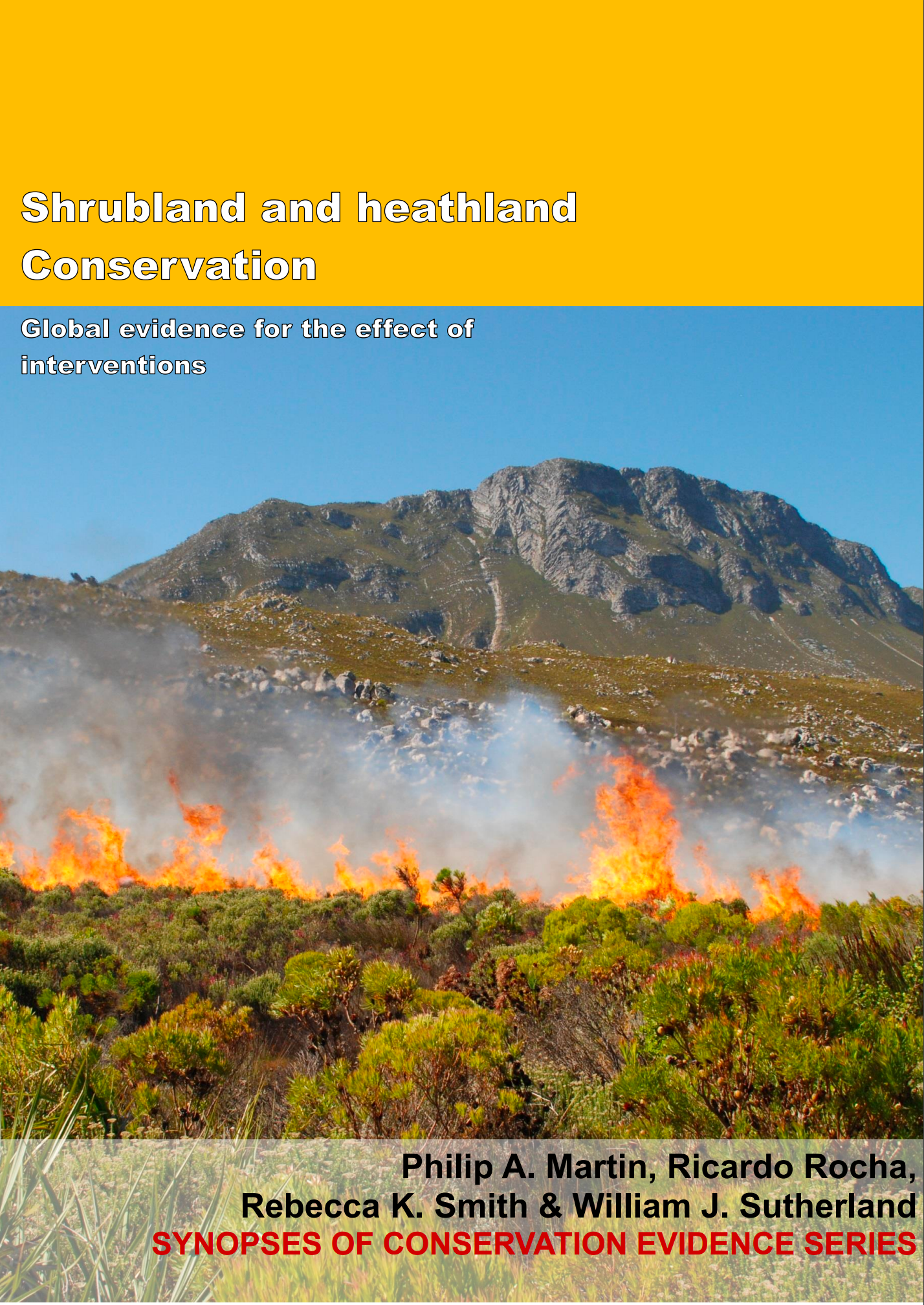Use grazing to control trees
-
Overall effectiveness category Unknown effectiveness (limited evidence)
-
Number of studies: 1
View assessment score
Hide assessment score
How is the evidence assessed?
-
Effectiveness
20% -
Certainty
10% -
Harms
5%
Study locations
Supporting evidence from individual studies
A randomized, controlled, before-and-after study in 2005-2009 in a heathland invaded by aspen Populus tremuloides and silver birch Betula pendula in Italy (Ascoli et al. 2013) found that grazing to reduce tree cover reduced the cover of common heather Calluna vulgaris and the basal area of trees but did not alter the cover of purple moor grass Molinia arundinacea. After five years, the cover of common heather in grazed areas was similar (77%) to than that in areas that were not burned (77%). Purple moor grass cover was similar between grazed (84%) and ungrazed areas (88%). The basal area of trees was lower in grazed (3.2 m2/ha) than in ungrazed areas (4.6 m2/ha). No statistical analyses were carried out in this study. Starting in spring 2006 nine 650 m2 plots were grazed by goats for five years, and another six plots were not grazed. Five 2 x 2 m quadrats were placed in each plot and diameter of trees within them measured. Cover of common heather and purple moor grass was estimated using a 10 m transect in each plot along which the presence of both species was noted every 20 cm.
Study and other actions tested
Where has this evidence come from?
List of journals searched by synopsis
All the journals searched for all synopses
This Action forms part of the Action Synopsis:
Shrubland and Heathland Conservation
Shrubland and Heathland Conservation - Published 2017
Shrubland and Heathland synopsis





)_2023.JPG)














